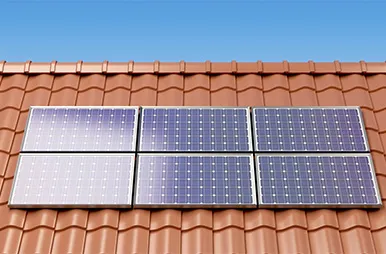Winter Performance and Efficiency of Solar Panels in Cold Weather Conditions
Efficiency of Solar Panels in Winter
As the world increasingly turns to renewable energy sources to combat climate change, solar power has emerged as a leading contender for sustainable energy solutions. However, one common misconception is that solar panels are ineffective during the winter months. Understanding the efficiency of solar panels in winter conditions is crucial for potential users to optimize their energy solutions throughout the year.
First and foremost, it's essential to understand that solar panels operate using sunlight, not heat. This means that even in winter, when temperatures drop, solar panels can still generate electricity. In fact, cold weather can often enhance the efficiency of solar panels. Most solar panels are made from silicon, which has a characteristic known as the temperature coefficient. This coefficient indicates that as the temperature decreases, the panels can perform slightly better than they would in hotter conditions. The colder the environment, the more efficiently solar panels can convert sunlight into electricity.
Moreover, winter days are often accompanied by clear skies, which can lead to increased sunlight exposure. In many regions, while daylight hours are shorter, the quality of light during those hours can be surprisingly effective for solar generation. Consequently, if there are few clouds blocking the sun, solar panels can still produce a substantial amount of energy, despite the chill in the air.
However, several factors can impede the efficiency of solar panels during the winter months. Snow accumulation is one of the most significant challenges. While snow can block sunlight, it also tends to slide off tilted solar panels due to their angle, minimizing the overall impact on energy production. In areas with heavy snowfall, it's advisable to maintain the panels regularly and ensure they are free from any obstructions.
efficiency of solar panels in winter

Additionally, the angle and orientation of solar panels play critical roles in their winter efficiency. In many cases, adjusting the angle of the solar panels to capture more sunlight during the lower sun trajectory in winter can lead to increased energy production. This adjustment can maximize exposure to the sun's rays, compensating for the shorter days.
Another aspect to consider is the energy consumption patterns during winter. Many households consume more energy during the winter months due to heating requirements. This increased demand can be supplemented by solar energy, provided the system is adequately designed to meet higher consumption levels. Homeowners interested in solar solutions should consider the size of their solar array and battery storage capacity to ensure they can harness enough sunlight to meet their winter energy needs.
Moreover, advancements in solar technology continue to improve winter performance. Innovations in bifacial solar panels allow for the absorption of light from both sides, capturing sunlight reflected from snow and maximizing output even in challenging conditions.
In summary, while the efficiency of solar panels may be affected by winter weather conditions, they remain a viable energy source during these months. By understanding how to optimize panel placement, maintain cleanliness, and account for energy consumption patterns, users can harness the potential of solar energy year-round. With proper care and consideration, solar panels can provide consistent and reliable energy, even during the cold, dark days of winter. Transitioning to solar energy is not only a smart financial investment but also a crucial step in promoting environmental sustainability.
-
Unlocking Energy Freedom with the Off Grid Solar InverterNewsJun.06,2025
-
Unlock More Solar Power with a High-Efficiency Bifacial Solar PanelNewsJun.06,2025
-
Power Your Future with High-Efficiency Monocrystalline Solar PanelsNewsJun.06,2025
-
Next-Gen Solar Power Starts with Micro Solar InvertersNewsJun.06,2025
-
Harnessing Peak Efficiency with the On Grid Solar InverterNewsJun.06,2025
-
Discover Unmatched Efficiency with the Latest String Solar InverterNewsJun.06,2025







